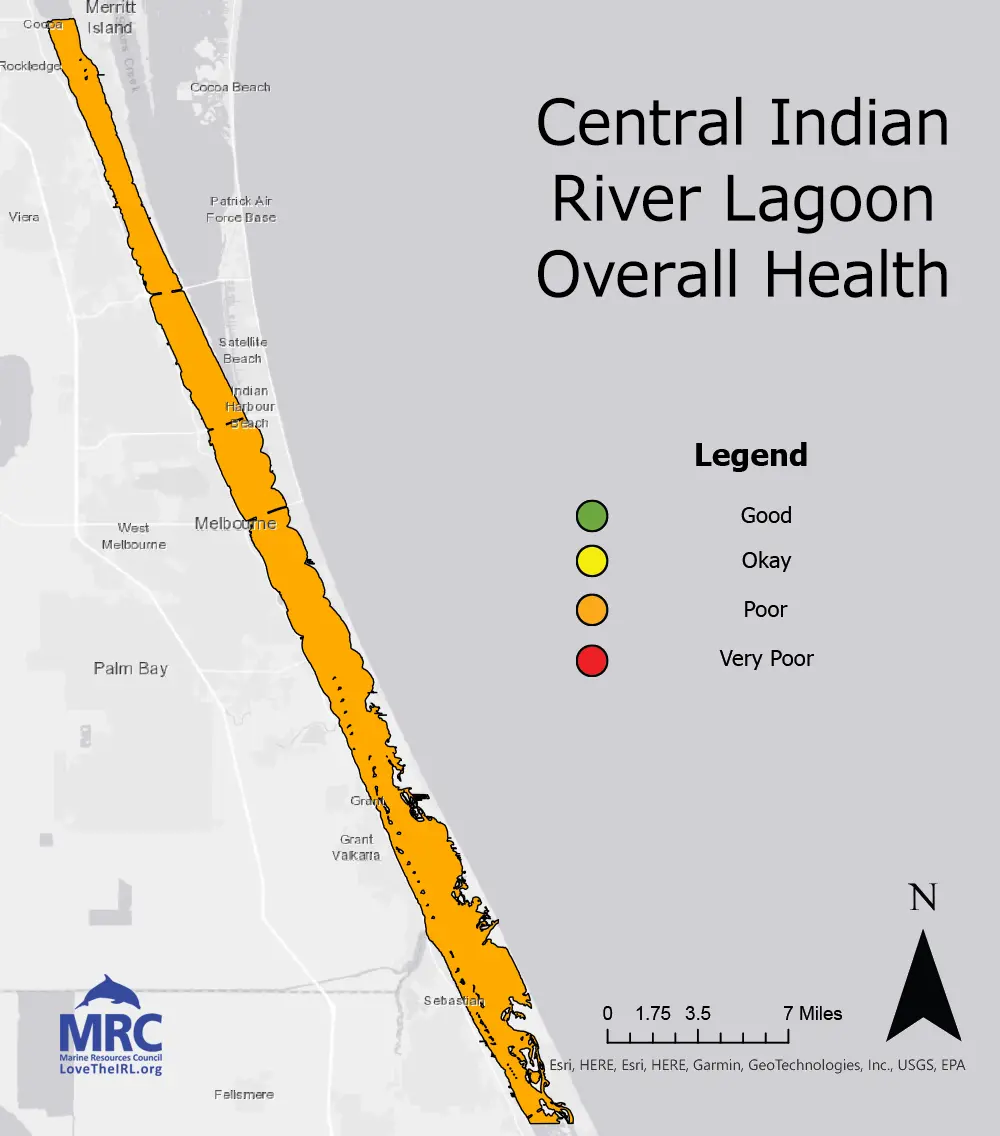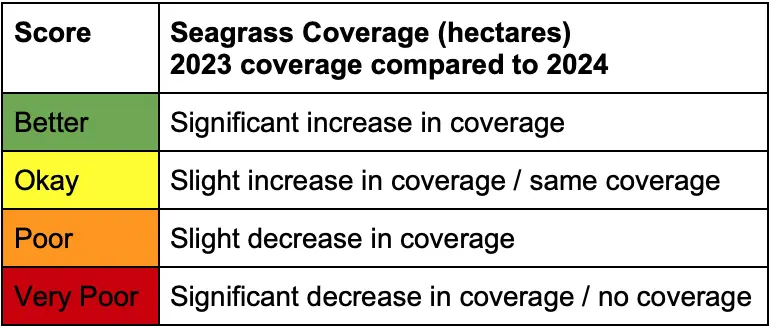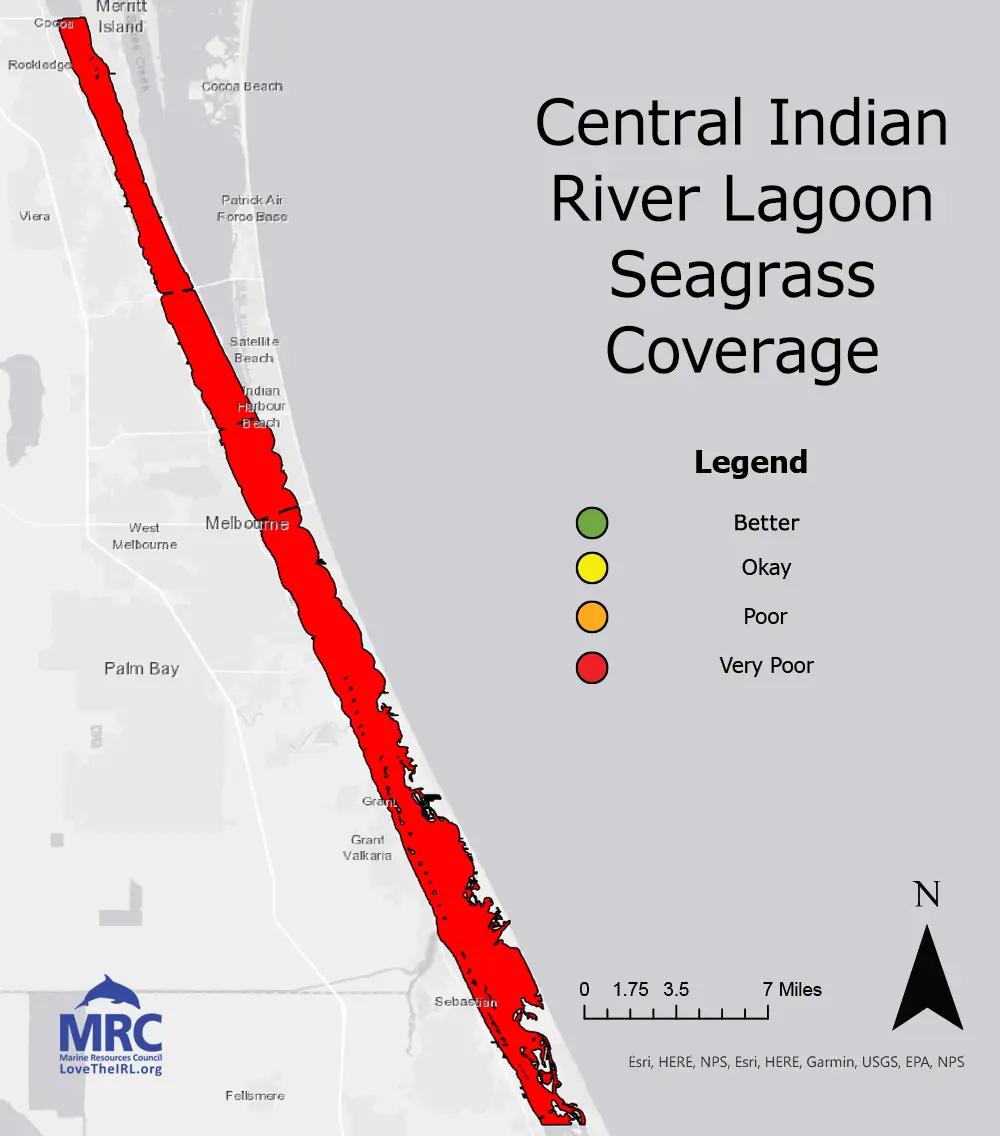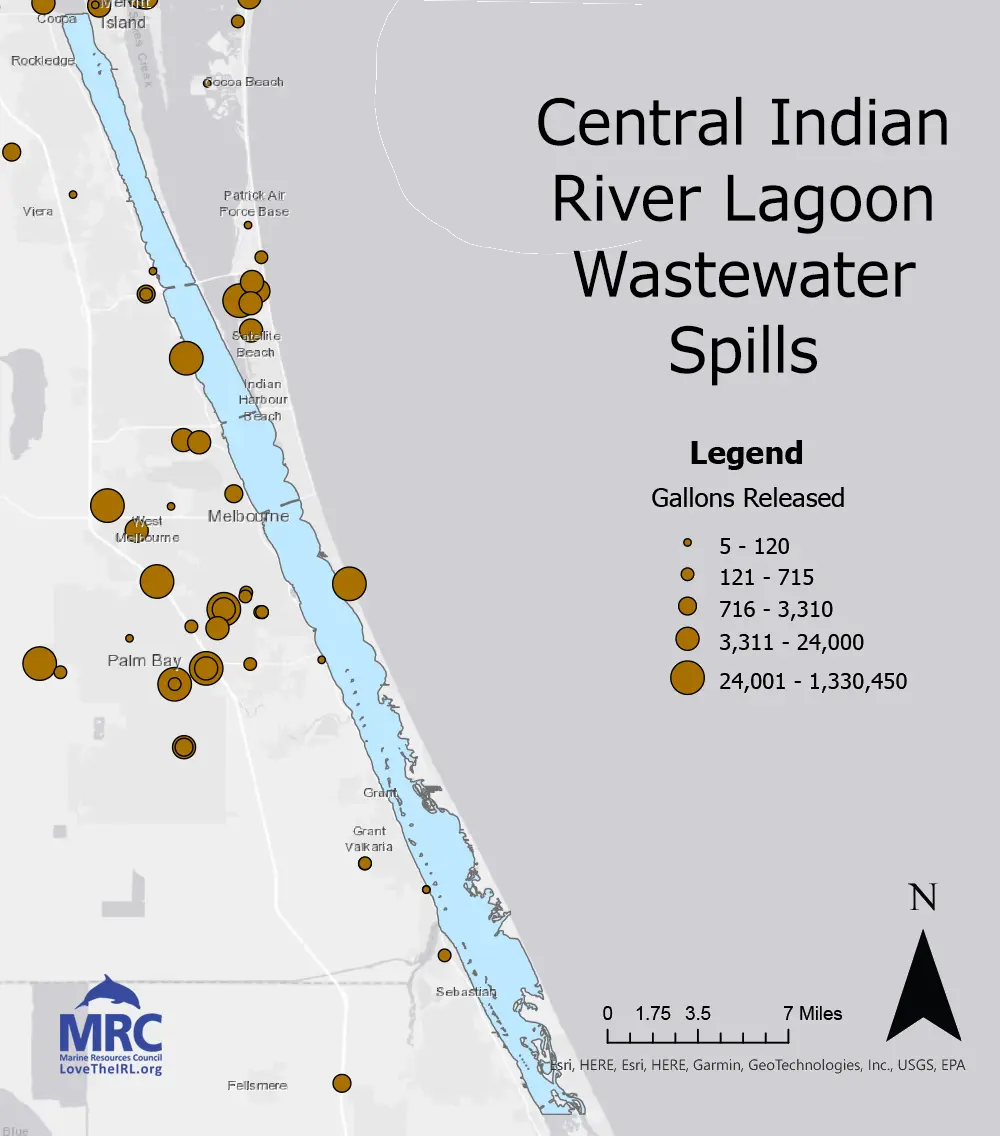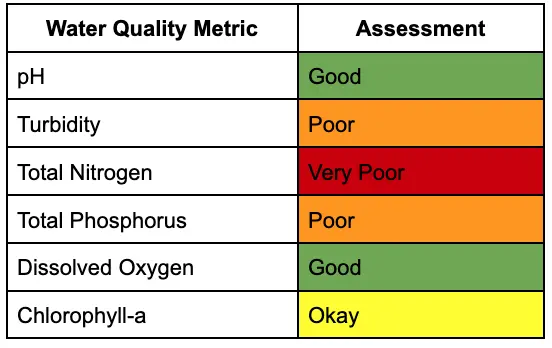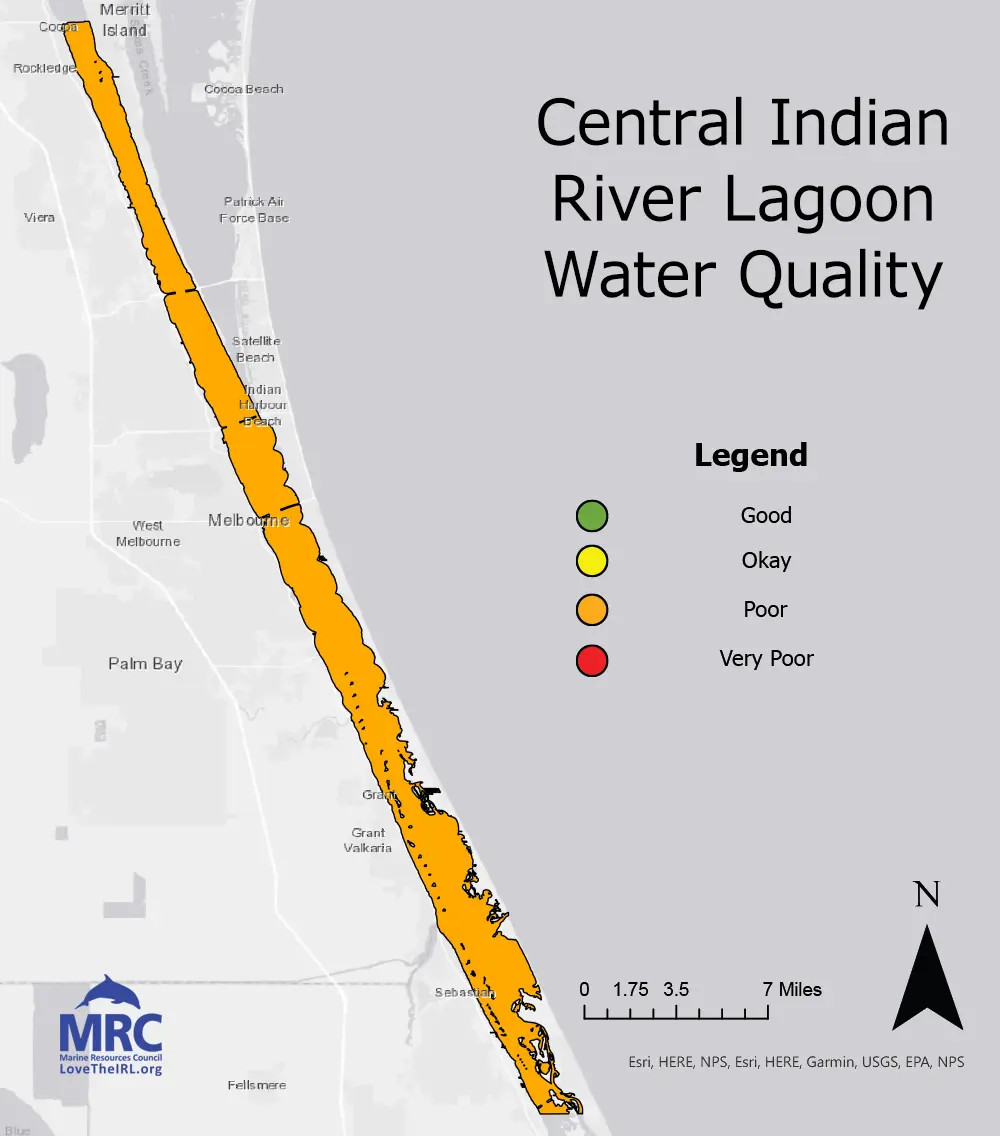Central Indian River Lagoon
The 2024 health assessment for the Central Indian River Lagoon is “poor” with significant variability across the five health indicators. Harmful algae data show that algae concentrations were “okay” across the basin and there were no substantial, long-lasting blooms. However, there were a large number of wastewater spills and very limited seagrass coverage.
Although results from the limited sediment health data are encouraging, the Central IRL is the only basin that earned a “poor” water quality assessment in 2024. The Central IRL is a tricky basin in a very complex system because of its length, usage, distance between inlets, and population density. We’re on the right road with long-term projects, continued monitoring, and municipal support, but we still have a long way to go.
Harmful Algal Blooms
From August 1, 2023 to August 1, 2024, the Central Indian River Lagoon experienced two harmful algal bloom events. The median value of chlorophyll-a concentration in the basin for the year was 5.5 ug/L with an average concentration of 15.3 ug/L, earning an “okay”.
Seagrass Coverage
Compared to 2023 seagrass coverage, the Central Indian River Lagoon earned a “very poor” assessment for 2024. Sparse seagrass was recorded in the basin from August 2023 to August 2024.
Sediment Health
Sediment health data for the Central Indian River Lagoon were provided by the Smithsonian Fort Pierce Marine Station and Marine Resources Council. Although data are sparse, they show good sediment conditions. This is good news for the possibility of future seagrass growth.
Wastewater Spills
From 2023 to 2024, there were 52 wastewater spills that affected the Central IRL watershed with nine releasing into the Lagoon. Of those nine spills (between 50 and 1,333,000 gallons), seven were untreated wastewater, one was partially treated wastewater, and the largest (1,330,000 gallons) was treated water.
Water Quality
Water quality in the Central River Lagoon was assessed as “poor”. The health indicator assessment is based on averaging the pH, turbidity, total nitrogen, total phosphorus, dissolved oxygen, and chlorophyll-a values in the basin. The Central IRL received a “good” for pH and dissolved oxygen, “okay” for chlorophyll-a, “poor” for turbidity and total phosphorus, and “very poor” for total nitrogen.
Your Financial Support Makes It Happen!
Donate to become an Annual Member Today!
Marine Resources Council (MRC) coordinates Lagoon-wide efforts to Save the Indian River Lagoon, but we need your support to succeed. It will take a community to save the Lagoon, working at all levels.
MRC is holding government workshops, coordinating diverse stakeholder groups, showcasing community leaders, and working with businesses and individuals to encourage actions that will help save the Indian River Lagoon.
This website is managed by the Marine Resources Council, a 501(c)(3) nonprofit organization that has been dedicated to protecting and restoring the Indian River Lagoon since 1983.
Marine Resources Council • 3275 Dixie Hwy NE, Palm Bay, FL 32905.
Site development by Editype.


